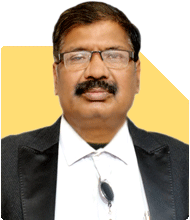Ramalingam Kalirajan |8077 Answers |Ask -Follow
Mutual Funds, Financial Planning Expert - Answered on May 08, 2024
He has an MBA in finance from the University of Madras and is a certified financial planner.
He is the director and chief financial planner at Holistic Investment, a Chennai-based firm that offers financial planning and wealth management advice.... more

Hi, I am 41 year old with my wife and 3 kids. I have already invested 390000 in various mfs and currently sip of 15,000 pm. Also I am investing 50000 per year in NPS from past 3 years I want to retire at age of 52 year. My current expense is 50,000 pm. How do I get 70,000 after my retirement.Please advise. Thanks.
Assess Current Investments: Start by assessing your current investments, including the 3,90,000 rupees invested in various mutual funds (MFS) and the 15,000 rupees per month SIP. Evaluate the performance of your investments, their growth potential, and their suitability for achieving your retirement goal.
Review NPS Contributions: Review your contributions to the National Pension System (NPS), which can provide you with a pension income during retirement. Since you've been investing 50,000 rupees per year for the past three years, evaluate the expected corpus at retirement age and the potential pension income it can generate.
Calculate Retirement Corpus: Estimate the corpus needed to generate 70,000 rupees per month after retirement. Consider factors such as inflation, expected rate of return on investments, and life expectancy. Use retirement calculators or consult with a financial advisor to determine the required corpus.
Increase SIP Contributions: To accelerate your retirement savings, consider increasing your SIP contributions. Determine how much additional monthly SIP amount you can comfortably afford and adjust your investment strategy accordingly. Aim to maximize your savings while maintaining a diversified portfolio aligned with your risk tolerance and investment goals.
Explore Additional Income Sources: Apart from investments, explore other income sources that can supplement your retirement income. This may include rental income from properties, income from side businesses or freelancing, or any other passive income streams.
Optimize Expenses: Review your current expenses and identify areas where you can reduce unnecessary spending. By optimizing your expenses, you can free up more funds for retirement savings and increase your chances of achieving your financial goals.
Seek Professional Advice: Consider consulting with a Certified Financial Planner (CFP) or financial advisor who can provide personalized guidance based on your specific financial situation and retirement goals. A professional can help you create a comprehensive retirement plan, optimize your investment strategy, and make informed decisions to secure your financial future.
By taking proactive steps to maximize your savings, optimize your investments, and plan for retirement, you can work towards achieving your goal of generating 70,000 rupees per month after retiring at the age of 52. Stay disciplined, stay focused on your objectives, and regularly review and adjust your financial plan as needed to stay on track towards a financially secure retirement.
You may like to see similar questions and answers below
Ramalingam Kalirajan |8077 Answers |Ask -Follow
Mutual Funds, Financial Planning Expert - Answered on Apr 30, 2024
Ramalingam Kalirajan |8077 Answers |Ask -Follow
Mutual Funds, Financial Planning Expert - Answered on Apr 29, 2024
Ramalingam Kalirajan |8077 Answers |Ask -Follow
Mutual Funds, Financial Planning Expert - Answered on May 10, 2024
Ramalingam Kalirajan |8077 Answers |Ask -Follow
Mutual Funds, Financial Planning Expert - Answered on Oct 18, 2024
T S Khurana |388 Answers |Ask -Follow
Tax Expert - Answered on Mar 04, 2025
Milind Vadjikar |1084 Answers |Ask -Follow
Insurance, Stocks, MF, PF Expert - Answered on Mar 04, 2025
Rajesh Kumar Singh |139 Answers |Ask -Follow
IIT-JEE, GATE Expert - Answered on Mar 04, 2025
Rajesh Kumar Singh |139 Answers |Ask -Follow
IIT-JEE, GATE Expert - Answered on Mar 04, 2025
T S Khurana |388 Answers |Ask -Follow
Tax Expert - Answered on Mar 04, 2025
T S Khurana |388 Answers |Ask -Follow
Tax Expert - Answered on Mar 04, 2025
T S Khurana |388 Answers |Ask -Follow
Tax Expert - Answered on Mar 04, 2025
T S Khurana |388 Answers |Ask -Follow
Tax Expert - Answered on Mar 04, 2025
Mihir Tanna |1026 Answers |Ask -Follow
Tax Expert - Answered on Mar 04, 2025
Milind Vadjikar |1084 Answers |Ask -Follow
Insurance, Stocks, MF, PF Expert - Answered on Mar 04, 2025























